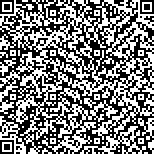| 摘要: |
| 创意市集作为近年来新兴的旅游目
的地发展迅速。一些特色市集与老旧工厂改
造项目结合,为工业遗产的保护与再利用注
入活力。研究青年群体对此类创意市集的感
知形象,为工业遗产更新的规划设计与市集
活动的长期运维提供了重要反馈。本文以景
德镇陶溪川创意市集为研究对象,以国内主
流社交网络平台的游记数据为语料库,通过
扎根理论编码、情感倾向分析等方法,结合
文化资本理论视角,研究发现:第一,创意
市集感知形象由消费体验、环境氛围、设施
服务三个主要范畴构成,共同建构了文化资
本场域,并将这一建构延伸到互联网空间;
第二,应考虑多元主体差异化的文化资本实
践路径,保证创意市集的商品原创性、景观
独特性,同时提升街区整体的公共设施服务
水平。 |
| 关键词: 工业遗产 创意产业 目的地形
象 文本分析 |
| DOI:10.13791/j.cnki.hsfwest.20240510001 |
| 分类号: |
| 基金项目: |
|
| Building the field of cultural capital: The perceived image study of Jingdezhen TaoxichuanCeramic Art Market |
|
YANG Zhongnan,ZHANG Jie
|
| Abstract: |
| Creative markets have rapidly developed in recent years as emerging cultural tourism
destinations. Personalized and original products sold by artists and craft artisans have gained
popularity among young consumers, making creative markets vibrant destinations for cultural
consumption and leisure. Some of these markets are located in industrial heritage sites, providing
impetus for the conservation and reuse of obsolete facilities. Beyond their touristic function, creative
markets have also emerged as platforms for cultural expression and social interaction among young
urbanites, who play a growing role in shaping alternative urban lifestyles and revitalizing urban
spaces through cultural participation. Understanding the perceived image of such markets among
young visitors offers valuable feedback for the planning and design of industrial site renewal and for
the long-term management of creative markets. This study takes the Taoxichuan Creative Market in
Jingdezhen as a typical case of industrial site reuse as a creative market. Jingdezhen, known as the
Porcelain Capital, has undergone industrial upgrading and urban regeneration over the past decade,
with tourism centered on ceramic culture developing rapidly. The Taoxichuan Creative Market is
located on the site of the former Universe Porcelain Factory, which was built in 1958 and shut down
in the 1990s. The factory was renovated in the 2010s into a multifunctional district that integrates
marketplaces, catering, retail, art studios, galleries, and civic activity centers, attracting a wide range
of users, from local residents to domestic tourists and ceramic entrepreneurs, and fostering an
inclusive and dynamic cultural environment. Since its launch in 2016, the Taoxichuan Creative
Market has become the largest and most attractive tourism destination in the city.The dataset used in
this study includes 340 user-generated travelogues collected in 2023 from mainstream Chinese social
media platforms, Xiaohongshu and Weibo. Based on the corpus, the study adopts grounded theory
coding and sentiment analysis, applying Pierre Bourdieu’s field theory of cultural capital to
deconstruct the perceived image of creative markets among young people. Bourdieu’s framework is
particularly useful for analyzing how cultural value is constructed and negotiated in non-traditional
cultural scene, where the boundaries between consumption, production, and identity performance are
increasingly blurred. Within the creative market, various forms of capital, including cultural goods,
symbols, and services, are produced, circulated, and owned. In this process, market vendors and
tourists together construct new social relationships. Drawing on Bourdieu’s theory of objectified,
embodied, and institutionalized capital and their dynamic interactions, this paper explains how
creative markets within industrial reuse projects facilitate the co-construction of cultural goods,
diverse participants, and urban landscapes through the production of different forms of cultural
capital. Furthermore, based on the emotional tendencies expressed in tourists’ perceived images, the
study provides the market operator with specific visitor feedback and suggestions for operational
improvement. The key research findings are as follows: 1) the perceived image of creative markets
consists of three main categories: consumption experiences, environmental atmosphere, and facility
services, which collectively construct a cultural capital field that extends into the online sphere; 2)operators should account for the differentiated cultural capital practices of multiple actors, ensure the originality of goods and the distinctiveness of the
landscape, and improve the overall level of public infrastructure and services. |
| Key words: industrial heritage creative industry destination image text analysis |


